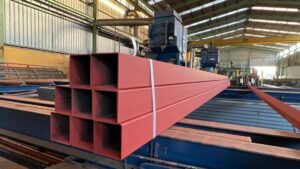
China’s gross domestic product expanded 3.2% year on year in the second quarter, signaling the economy is back on its growth path after a 6.8% contraction in the first quarter, as crude throughput and steel production rose along with the output of goods and services amid COVID-19 containment measures.
The National Bureau of Statistics, or NBS, on July 16 released a series of economic indicators that showed some recoveries in April-June economic activities.
However, market sources and analysts said the GDP growth in Q2 reflected mostly a rebound in the production of goods and services rather than actual recovery in demand and consumption. The country’s GDP for the first half of 2020 registered a 1.6% year-on-year contraction.
“The GDP growth is now stored to become inventory as exports fell, and little increase in domestic consumption [was seen] amid the heavy flood after coronavirus,” a Beijing-based economist said.
China’s crude oil throughput rose 5.7% on the year in Q2 compared with a 4.6% year-on-year decline in Q1. The throughput level in June reached an all-time high of 14.14 million b/d, up 9% from a year earlier, NBS data showed on July 16.
The high throughput was primarily driven by the country’s record high crude imports in recent months, with both state-run and independent refiners taking full advantage of low oil prices in Q2.
The aggressive crude purchases in recent trading cycles were predominantly price-driven, and not related to fundamental changes in consumer and industrial fuel demand, market sources and analysts said.
Several sources with state-run Sinopec and PetroChina’s refineries said their oil product tanks were all full.
Meanwhile, the country’s crude steel output growth accelerated in Q2 to 1.6% on the year, up from 1.2% year-on-year growth in Q1. This was driven by the recovery in infrastructure and property construction, as well as traders buying on expectations of a further improvement in the infrastructure and property sector in the second half, sources said.
Also, the value of Chinese goods exports fell 0.2% in Q2 from the same period last year, compared with a 6.5% year-on-year decrease in Q1, NBS data showed.
Moreover, the country’s retail sales value registered a 3.9% year-on-year decline in April-June compared with a 19% plunge in Q1, suggesting end-users’ consumption has not fully recovered.
S&P Global Ratings forecast China’s GDP to grow 1.2% and 7.4% in 2020 and 2021, respectively.
“The economy is healing, helped by building stimulus and a buoyant property market. However, policy-led infrastructure investment will need to hand over to private demand, especially consumption, if the rebound is to take hold next year,” S&P Global Ratings said in a report.
Like S&P Global Platts, S&P Global Ratings is a division of S&P Global Inc.
— Analysts Oceana Zhou, Zhang Jing




